

John Muir Trail Data Book
First edition, 2014; second edition, 2022
Copyright 2014, 2022 by Keen Communications
Project editor: Ritchey Halphen
Cover design: Scott McGrew
Cartography: Elizabeth Wenk
Text design: Andreas Schller, with updates by Annie Long
Photos: Elizabeth Wenk, except as noted
Library of Congress Cataloging-in-Publication Data is available at catalog.loc.gov.
ISBN 978-1-64359-093-6 (pbk.) | ISBN 978-1-64359-094-3 (ebook)
 WILDERNESS PRESS
WILDERNESS PRESS
An imprint of AdventureKEEN
2204 First Ave. S., Ste. 102
Birmingham, AL 35233
800-678-7006, fax 877-374-9016
Manufactured in the United States of America
Distributed by Publishers Group West
Cover photo: Camping in the Sierra Nevada; Patrick Poendl/Shutterstock
Visit wildernesspress.com for a complete listing of our books and for ordering information. Contact us at our website, at facebook.com/wildernesspress1967, or at twitter.com/wilderness1967 with questions or comments. To find out more about who we are and what were doing, visit blog.wildernesspress.com.
All rights reserved. No part of this book may be reproduced in any form, or by any means electronic, mechanical, recording, or otherwise, without written permission from the publisher, except for brief quotations used in reviews.
SAFETY NOTICE Although Wilderness Press and the author have made every attempt to ensure that the information in this book is accurate at press time, they are not responsible for any loss, damage, injury, or inconvenience that may occur while using this book. You are responsible for your own safety and health while in the wilderness. The fact that a trail is described in this book does not mean that it will be safe for you. Be aware that trail conditions can change from day to day. Always check local conditions, know your own limitations, and consult a map.
Contents
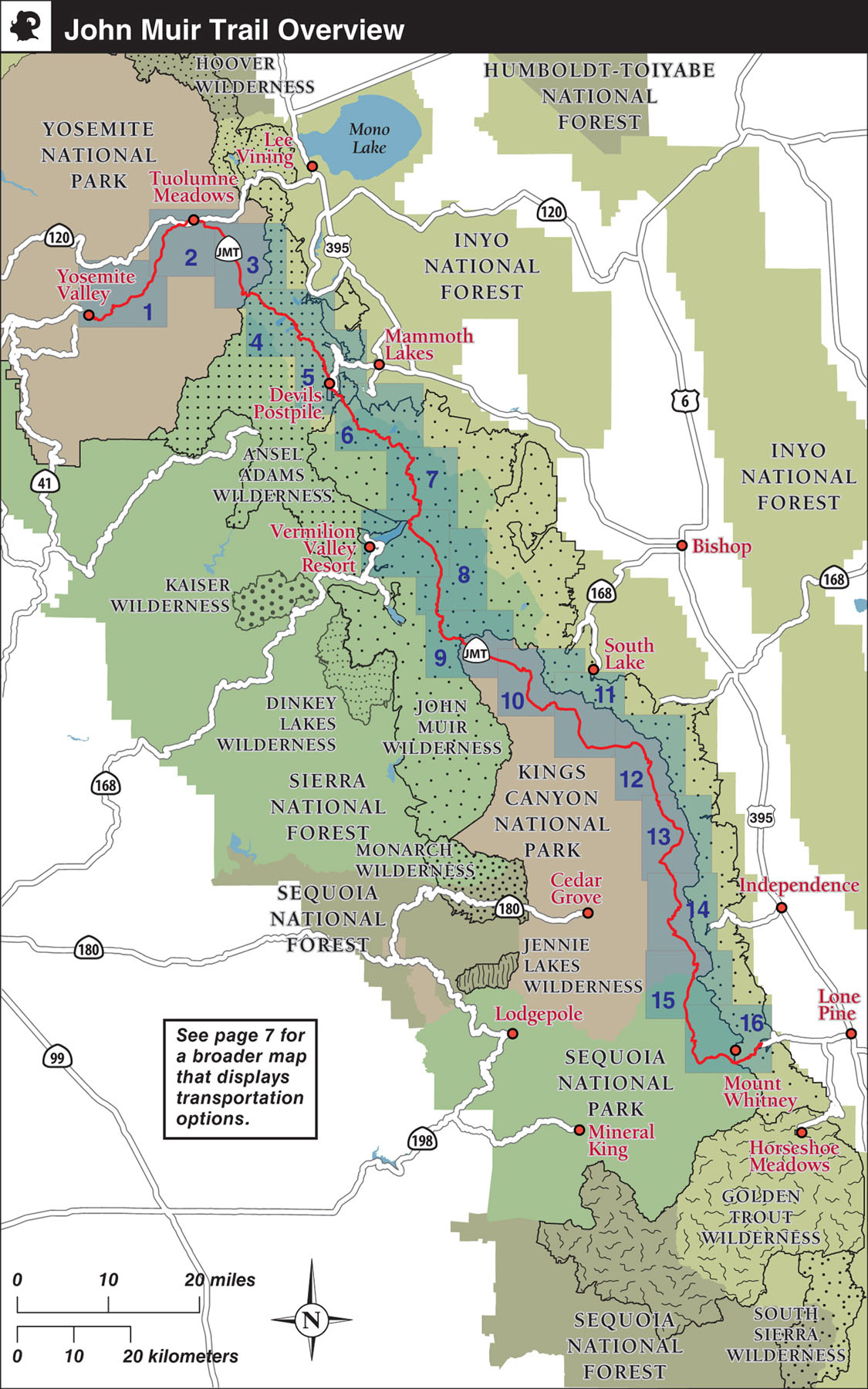
Introduction
T he John Muir Trailor, more simply, the JMTis one of the worlds premier long-distance hiking trails. A little more than 220 miles in length, it traverses the spine of Californias Sierra Nevada, passing through superb mountain scenery. This is a land of 13,000- and 14,000-foot peaks, of soaring granite cliffs, of lakes by the thousands, and of canyons 5,000 feet deep. The trail passes near roads only in Tuolumne Meadows and Devils Postpile, otherwise winding through remote mountain landscapes.
Part of the beauty of this long-distance walk is that the landscape continually changes as you travel from Happy Isles (in eastern Yosemite Valley) to Whitney Portal (west of the town of Lone Pine, in the Owens Valley). Each day you will find new wonders to captivate your attention: rounded domes in Tuolumne Meadows, volcanic features near Devils Postpile, magical hemlock forests near Silver Pass, dashing cascades along Bear Creek, the glacial landscape of Evolution Basin, the near-vertical peaks of the Palisades, carpets of alpine flowers around Pinchot Pass, spectacular lake basins such as the Rae Lakes, scattered foxtail pines on Bighorn Plateau, and of course the views from the summit of Mount Whitney, Californias tallest peak.
The Sierra is an especially lovely area for a multiweek hike, for it is blessed with the mildest, sunniest climate of any major mountain range in the world. Though rain does fall in the summer, it seldom lasts more than an hour or two, and the sun is out and shining most hours of the day. Most likely, the greatest challenge you will face is the logistics of resupplying food because the southern 160 miles do not pass a road, and for the final 110 miles you do not even pass close to a food resupply depot. You are, of course, not the only person to have heard of these attractions and will encounter people daily, but the trail really is a thin line through a vast land; with little effort you can always camp on your own if you leave the trail.
Using This Book
This book is a companion to John Muir Trail: The Essential Guide to Hiking Americas Most Famous Trail, also published by Wilderness Press. As the title indicates, the Data Book focuses exclusively on the data sections of the larger book, including tables with junction locations and distances between junctions, topographic maps, elevation profiles, a table of campsite locations, and some basic information to help you plan your trip.
If you are seeking trail descriptions, information about natural history of the region, suggestions for possible side trips along the trail, or advice on how to hike in the Sierra, I recommend that you purchase the thicker volume. If, however, you anticipate it will be too heavy for the trail, carry a copy of this book instead.
This guide provides you with the data you need to design your own trip, either in advance or while you hike. Some people hike only 7 miles a day, while others happily cover more than 20; some hikers complete the entire trail in one go, while others hike a section at a time. This book caters to everyone: it provides information on distances along the trail, established camping locations, stretches of trail with steep ascents and descents, and lateral trails that access the JMT. From there, you design the itinerary that best suits you.
The introductory material provides information on three essential JMT topics: how to obtain a wilderness permit, how to get yourself to and from the two endpoints using either public transportation or a private shuttle, and how to arrange food resupplies along the trail. All of the phone numbers and websites required for your planning are supplied. Also provided are area maps of Yosemite Valley, Tuolumne Meadows, and Lone Pine to orient you at trailheads, as well as a map showing air and shuttle-bus transportation options that access the JMT.
Next are 16 topographic maps, onto which trail junctions and campsites (listed in the for additional information.
The topographic maps are followed by the trail data. Mirroring the organization of the larger JMT book, the trail information is split into 13 sections, one for each of the river drainages through which the JMT passes. Each section includes a detailed elevation profile of the trail and a table listing major waypoints, including most trail junctions. Each waypoint entry in the tables includes the elevation, GPS coordinates (expressed as latitude and longitude), the distance from the previous point, and the cumulative distance from the JMTs northern terminus, Happy Isles.
At the end of the book is some extra data. First is a table listing established, legal campsites. For each campsite, information provided includes the cumulative trail distance, the GPS coordinates, a brief description, and whether campfires are permitted. The next section comprises elevation profiles, data tables, and two maps for lateral trails feeding into the JMTthis information is valuable if you plan to section-hike the JMT, or if you unexpectedly have to exit the wilderness and need to determine the most efficient way to exit. The section on lateral trails is followed by a table listing emergency numbers for the jurisdictions through which the JMT passes and the locations of wilderness ranger stations.
I wish you a wonderful trip on the JMT. Enjoy the superb surroundings as you traipse along a trail that commemorates one of the worlds most influential conservationists.
Next page
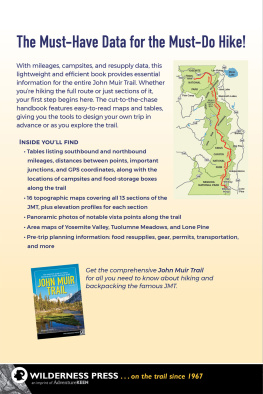
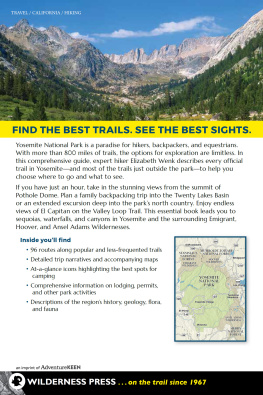
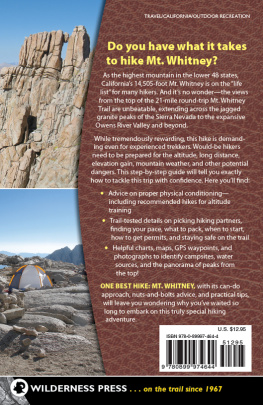


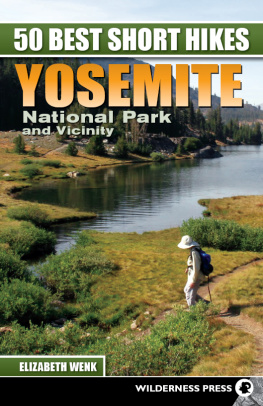
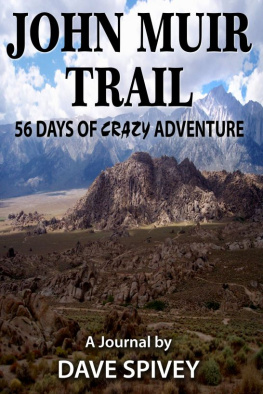
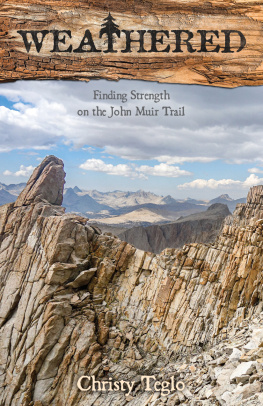
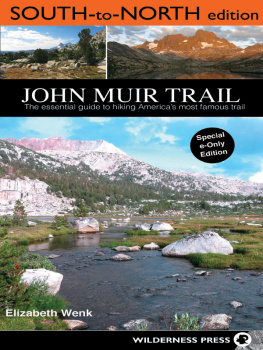
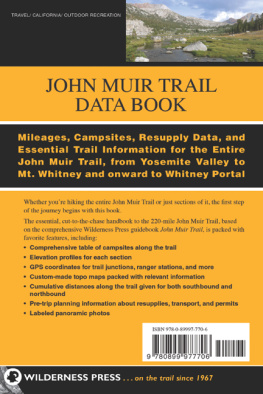
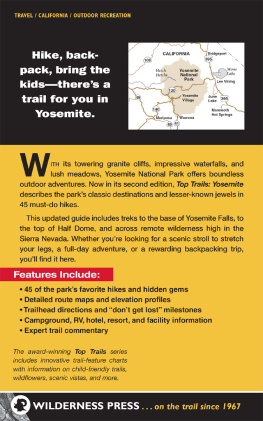
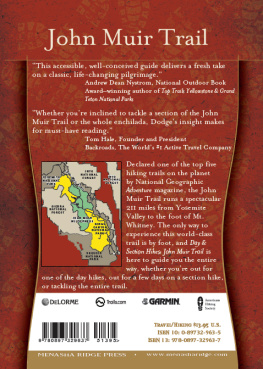
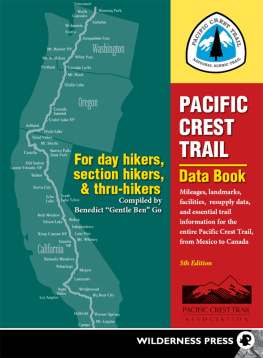

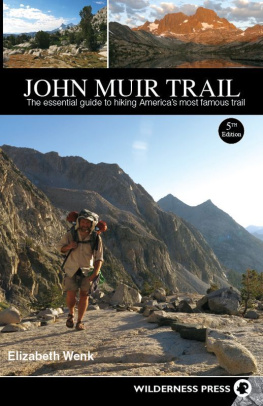


 WILDERNESS PRESS
WILDERNESS PRESS